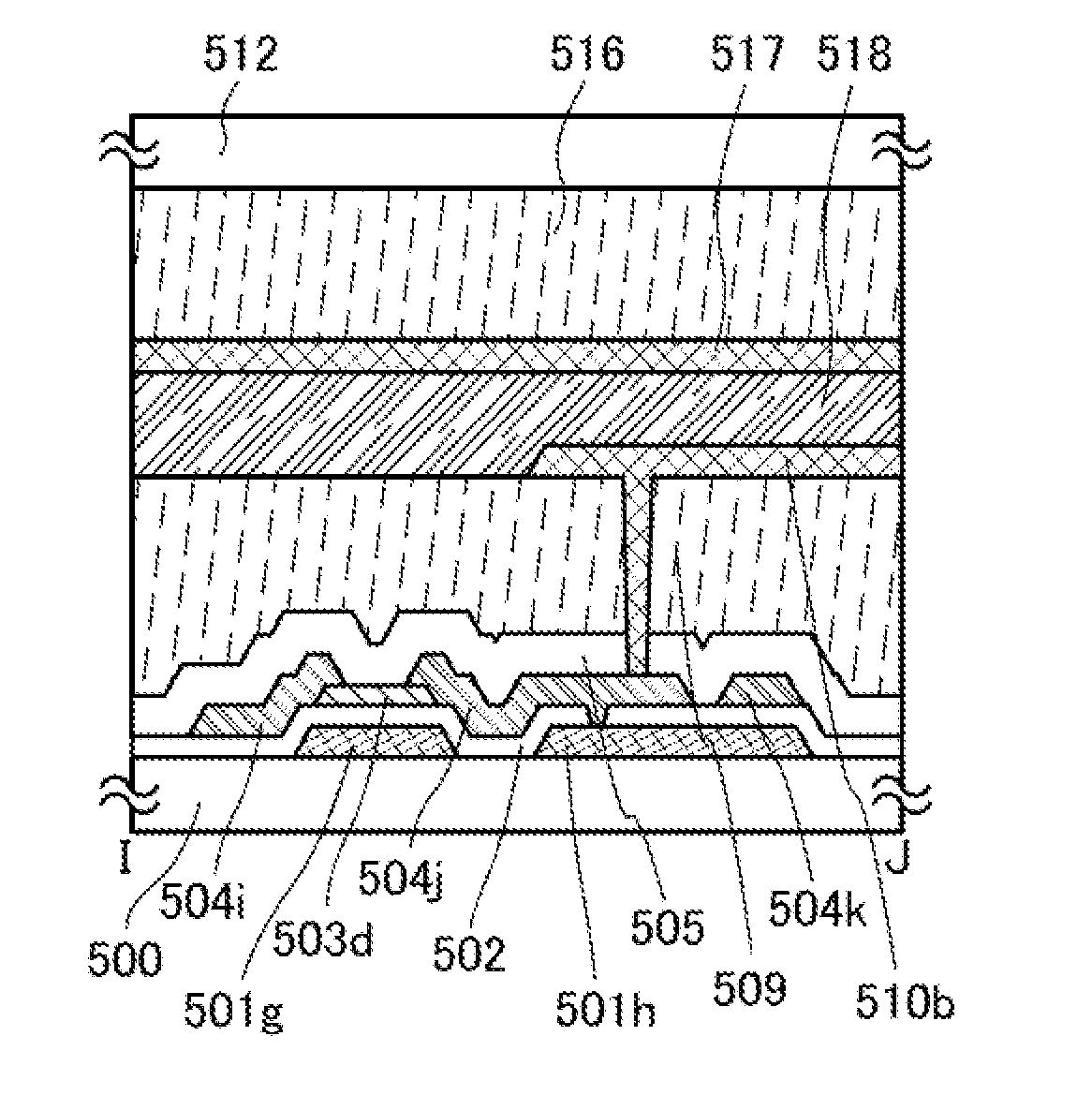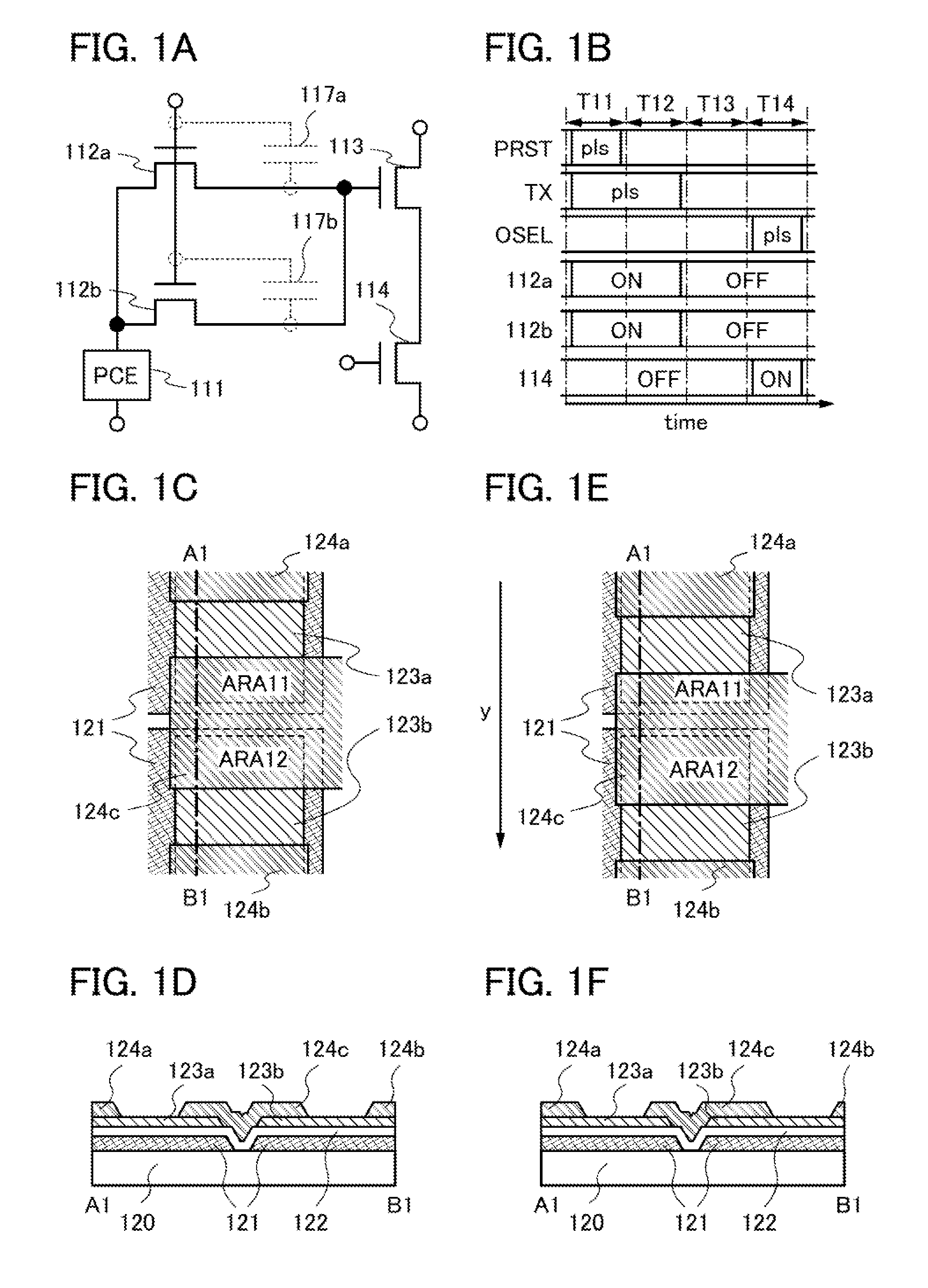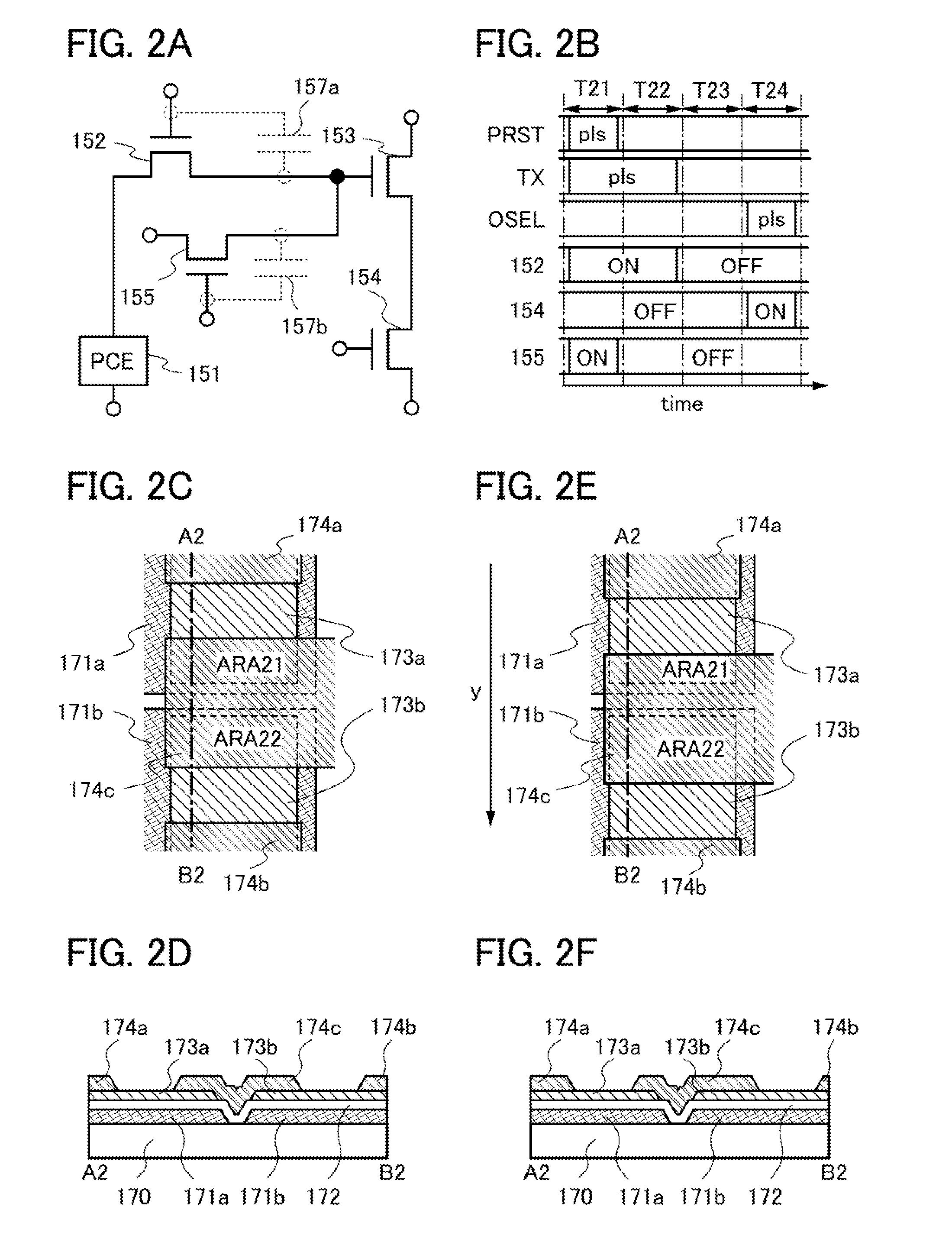Photodetector circuit, input device, and input/output device
a photodetector circuit and input/output device technology, applied in the direction of electrical equipment, semiconductor devices, radio frequency controlled devices, etc., can solve the problems of large influence of the photodetector circuit and the value of optical data, and achieve the effect of suppressing parasitic capacitance on optical data in the photodetector circuit and reducing the cost of operation
- Summary
- Abstract
- Description
- Claims
- Application Information
AI Technical Summary
Benefits of technology
Problems solved by technology
Method used
Image
Examples
embodiment 1
[0052]In this embodiment, an example of a photodetector circuit will be described.
[0053]The example of the photodetector circuit in this embodiment will be described with reference to FIGS. 1A to 1F.
[0054]First, a structural example of the photodetector circuit in this embodiment will be described with reference to FIG. 1A.
[0055]The photodetector circuit illustrated in FIG. 1A includes a photoelectric conversion element 111, a transistor 112a, a transistor 112b, a transistor 113, and a transistor 114.
[0056]The transistor 112a the transistor 112b, the transistor 113, and the transistor 114 are field-effect transistors.
[0057]The photoelectric conversion element 111 includes a first current terminal and a second current terminal, and current. (also referred to as photocurrent) flows between the first current terminal and the second current terminal in accordance with the illuminance of incident light.
[0058]A photodetection reset signal (also referred to as a signal PRST) that is a puls...
embodiment 2
[0158]In this embodiment, an example of a photodetector circuit whose structure is partly different from that in Embodiment 1 will be described. Note that the description of the photodetector circuit in Embodiment 1 can be referred to as appropriate for the same portions as those in the photodetector circuit described in Embodiment 1.
[0159]The example of the photodetector circuit in this embodiment will be described with reference to FIGS. 2A to 2F.
[0160]First, a structural example of the photodetector in this embodiment is described with reference to FIG. 2A.
[0161]The photodetector circuit illustrated in FIG. 2A includes a photoelectric conversion element 151, a transistor 152, a transistor 153, a transistor 154, and a transistor 155.
[0162]The transistor 152, the transistor 153, the transistor 154, and the transistor 155 are field-effect transistors.
[0163]The photoelectric conversion element 151 includes a first current terminal and a second current terminal, and photocurrent flows...
embodiment 3
[0213]In this embodiment, an example of a photodetector circuit whose structure is partly different from those in Embodiments 1 and 2 will be described. Note that the description of the photodetector circuit in Embodiment 1 or 2 can be referred to as appropriate for the same portions as those in the photodetector circuit described in Embodiment 1 or 2.
[0214]The example of the photodetector circuit in this embodiment will be described with reference to FIGS. 3A to 3F.
[0215]First, a structural example of the photodetector in this embodiment is described with reference to FIG. 3A.
[0216]The photodetector circuit illustrated in FIG. 3A includes a photoelectric conversion element 211, a transistor 212, a transistor 213, a transistor 214, and a capacitor 215.
[0217]The transistor 212, the transistor 213, and the transistor 214 are field-effect transistors.
[0218]The photoelectric conversion element 211 includes a first current terminal and a second current terminal, and photocurrent flows be...
PUM
 Login to View More
Login to View More Abstract
Description
Claims
Application Information
 Login to View More
Login to View More - R&D
- Intellectual Property
- Life Sciences
- Materials
- Tech Scout
- Unparalleled Data Quality
- Higher Quality Content
- 60% Fewer Hallucinations
Browse by: Latest US Patents, China's latest patents, Technical Efficacy Thesaurus, Application Domain, Technology Topic, Popular Technical Reports.
© 2025 PatSnap. All rights reserved.Legal|Privacy policy|Modern Slavery Act Transparency Statement|Sitemap|About US| Contact US: help@patsnap.com



